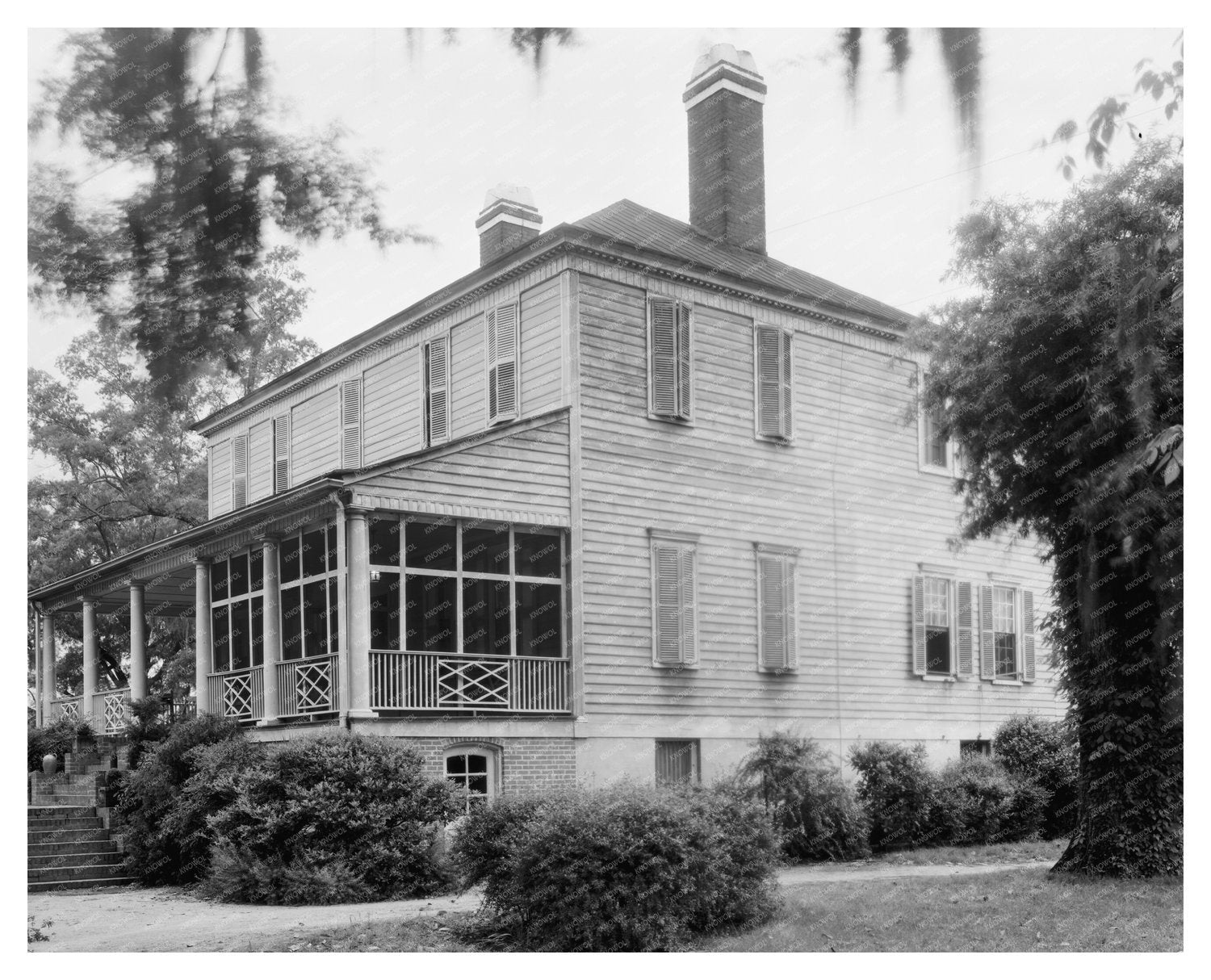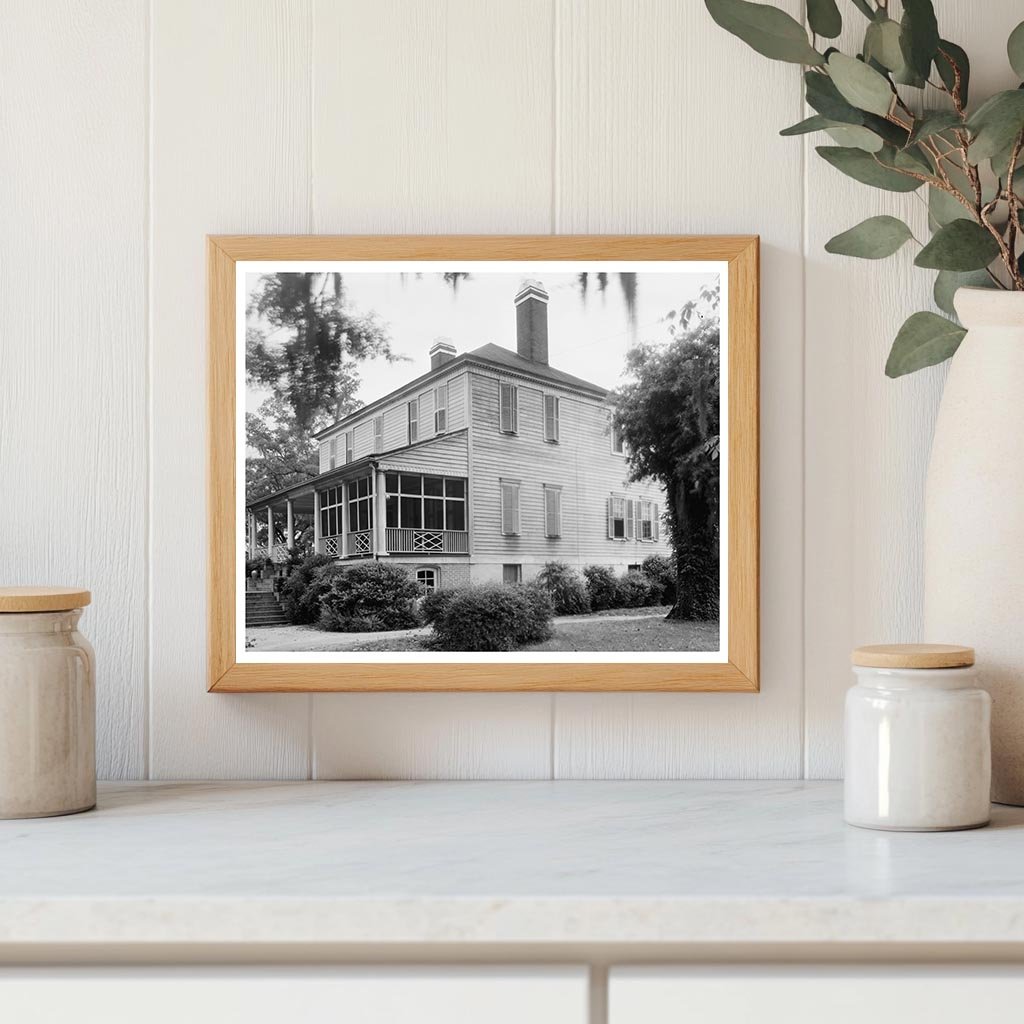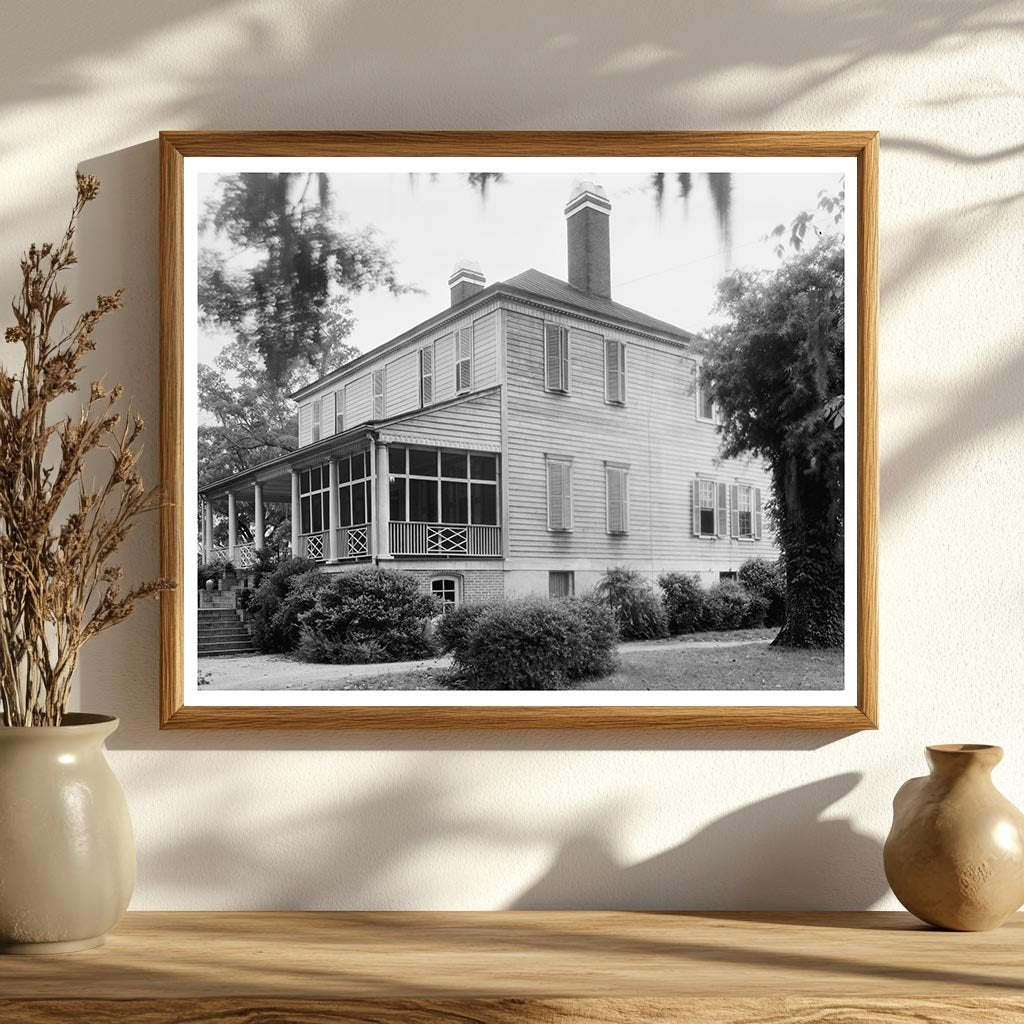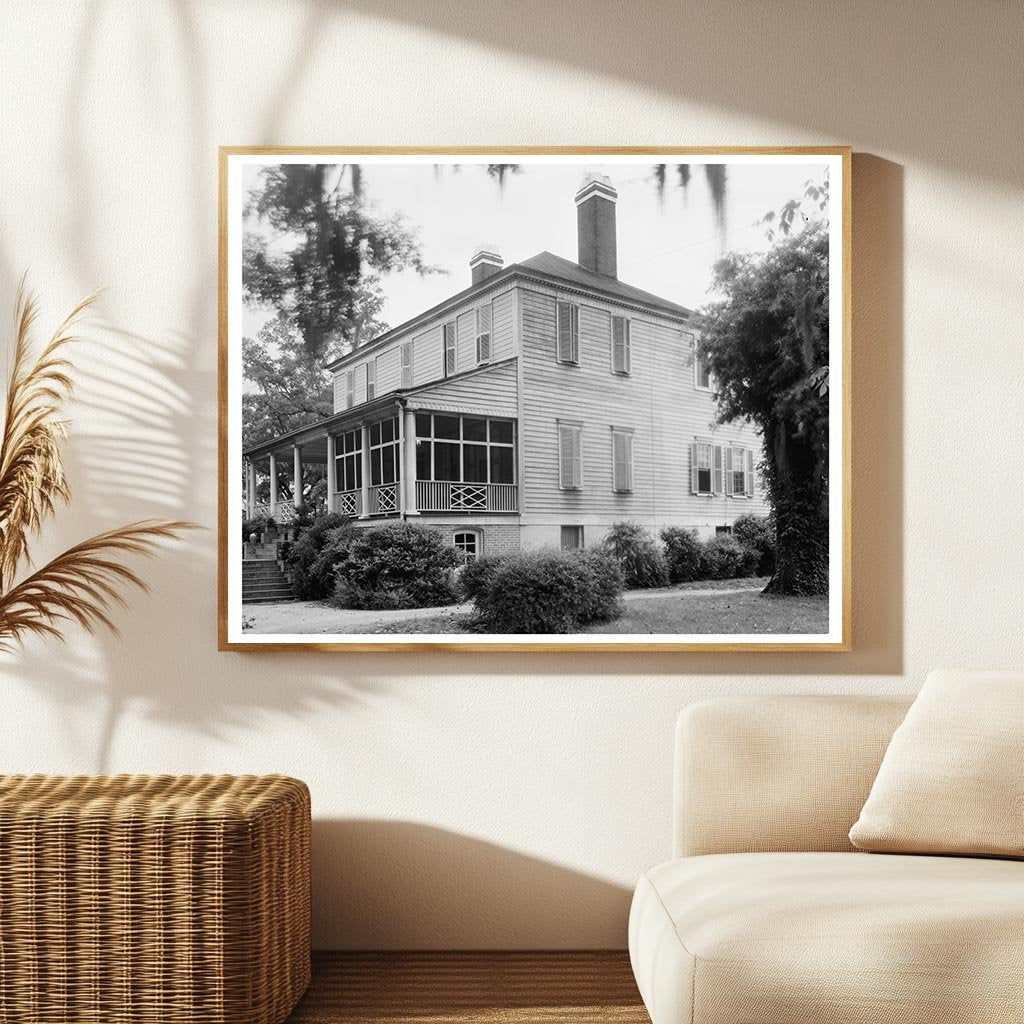



Eutaw Springs SC Historic House Photograph 1805
The vintage photograph captures a historic structure located in Eutaw Springs, Orangeburg County, South Carolina. Built in 1805 by Captain Gaillard, the house represents a period of agricultural prosperity following the decline of indigo farming, as Gaillard shifted his focus to cotton cultivation. This architectural gem showcases the classic elements of Southern antebellum design, featuring prominent columns and expansive porches typical of the era.
The image is part of the Carnegie Survey of the Architecture of the South, a comprehensive project aimed at documenting the rich architectural heritage of the Southern United States. It was later published in Samuel Gaillard Stoneys Plantations of the Carolina Low Country in 1938, highlighting its significance in the regions history.
Frances Benjamin Johnston, the photographer, meticulously recorded this and other historical sites, contributing to our understanding of Southern architecture. The photograph is a valuable artifact for those interested in the cultural and architectural history of South Carolina.

Eutaw Springs SC Historic House Photograph 1805
